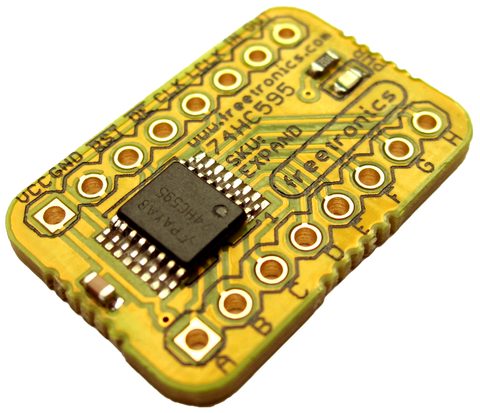Have you ever come across the term “”shift register” and had no idea what it refers to? This weeks Skill Sunday is for you! A shift register is a versatile device that is often used to expand the I/O available on a microcontroller. For example, if you are using 10 LEDs in your project, instead of wiring each LED to an output, you could use a shift register to control the LEDs which would only require 4 pins! This functionality is usually achieved by sending bytes of data to a shift register where each bit represents one of the outputs of the shift register. For a more detailed explanation, visit the Arduino ShiftOut tutorial over at the Arduino website, it explains how to use one or more shift registers to expand the number of digital outputs very easily.

When working with 74HC595 shift registers and solderless breadboards (or more permanent solutions) consider using the Freetronics EXPAND: Expansion/Shift register module. It contains the 74HC595 shift register on a small board with standard 0.1" spacing holes that are perfect for soldering header pins into for breadboard use, and a small "power on" LED. By doing this you have a robust vehicle to insert and remove easily without tools or the risk of bending the IC pins. This is only one of our large range of prototyping modules - check the full range today!

If you have any questions or comments about this week's Skill Sunday don’t hesitate to get in contact with us on Facebook and Twitter.










